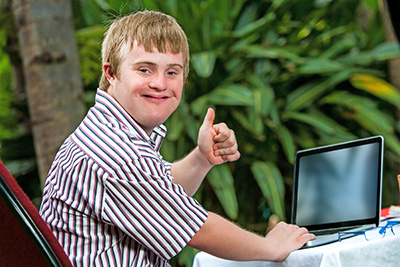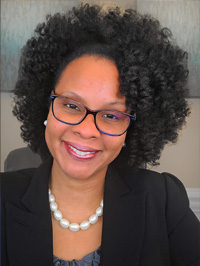What is secondary transition, and why is it important for students with disabilities?
Page 1: Life after High School
 As students finish high school, many eagerly anticipate beginning college or starting a new job. Often they move out of their parents’ home for the first time, perhaps living in a residence hall, with roommates, or on their own. The process of moving from high school to adulthood is known as secondary transition. Although this represents an exciting time of change, the secondary transition period can also be a source of stress and anxiety for many students with disabilities and their families. As they transition into adulthood, these students will experience new routines, expectations, and responsibilities that look quite different from those of high school. Moreover, they must learn to navigate new systems and policies related to adult services. Although progress has been made in postsecondary (sometimes referred to as post-school) education opportunities, community accessibility, and legal protections for adults with disabilities, students with disabilities continue to experience poorer outcomes than those without disabilities.
As students finish high school, many eagerly anticipate beginning college or starting a new job. Often they move out of their parents’ home for the first time, perhaps living in a residence hall, with roommates, or on their own. The process of moving from high school to adulthood is known as secondary transition. Although this represents an exciting time of change, the secondary transition period can also be a source of stress and anxiety for many students with disabilities and their families. As they transition into adulthood, these students will experience new routines, expectations, and responsibilities that look quite different from those of high school. Moreover, they must learn to navigate new systems and policies related to adult services. Although progress has been made in postsecondary (sometimes referred to as post-school) education opportunities, community accessibility, and legal protections for adults with disabilities, students with disabilities continue to experience poorer outcomes than those without disabilities.
Research Shows
- In 2024, only 38% of working-age adults with disabilities were employed compared to 75% of those without disabilities. Moreover, the employment rate was even lower for Black adults with disabilities, with only 29% being employed.
(U.S. Department of Labor, 2024) - In 2021, the median income of adults with disabilities was $28,438 compared to $40,948 among those without disabilities.
(U.S. Census Bureau) - Only 12% of adults with intellectual and developmental disabilities lived independently in their own home as of 2017.
(Larson et al., 2021) - As of 2022, 21% of adults who identified as having a disability held a bachelor’s degree or higher, compared to 38% of adults without disabilities.
(Postsecondary National Policy Institute, 2023) - Adults with disabilities are significantly more likely to report feelings of loneliness and social isolation than those without disabilities.
(Emerson et al., 2021)
![]() The National Technical Assistance Center on Transition: The Collaborative (NTACT:C) defines transition planning as “the very intentional, organized and coordinated process of guiding young people with disabilities with education, experiences, supports and services to help them have successful and meaningful lives beyond high school.”
The National Technical Assistance Center on Transition: The Collaborative (NTACT:C) defines transition planning as “the very intentional, organized and coordinated process of guiding young people with disabilities with education, experiences, supports and services to help them have successful and meaningful lives beyond high school.”
To address these challenges and facilitate positive outcomes for students with disabilities, the Individuals with Disabilities Education Act (IDEA) requires that these students receive tailored supports and services via transition planning. Such planning involves helping students establish goals and develop the skills they will need in adulthood in three primary areas:
- Education and training
- Employment
- Community engagement and independent living, if needed
Individuals with Disabilities Education Act (IDEA)
Name given in 1990 to the Education for All Handicapped Children Act (EHA) and used for all reauthorizations of the law that guarantees students with disabilities the right to a free appropriate public education in the least-restrictive environment.
transition planning
The process of developing and implementing individualized supports and services to prepare students with disabilities for postsecondary options in the areas of employment, education and training, and community engagement and independent living.
In this interview, Bettie Ray Butler discusses why transition planning is especially important for students with disabilities from diverse backgrounds (time: 1:26).

Bettie Ray Butler, PhD
Professor of Urban Education
University of North Carolina at Charlotte
Content Specialist, NTACT:C
Transcript: Bettie Ray Butler, PhD
Transition planning for post-school success is extremely important for students that have been identified with having disabilities. One, we know that the research commonly suggests that students without disabilities have more positive post-school outcomes than students with disabilities. But when you factor in this notion of being culturally diverse, it is important to point out that these students in particular tend to have less favorable transition planning experiences when there is a cultural mismatch in schools. And we’ve seen that where close to 90% of the teaching force is white, female, monolingual, but the student population is growing in diversity. We tend to see that this cultural mismatch produces disparities, and these disparities show up for students that have disabilities in the transition planning process. So, again, it is very important to make sure that a plan has been identified and that attention is given specifically to how we implement transition planning for students of color and those from ethnically and linguistically diverse backgrounds.
Legislation 
In recent decades, federal laws have increasingly highlighted the importance of supporting the college and career readiness of students with disabilities. These include:
- The Individuals with Disabilities Education Act (IDEA): One purpose of this act, reauthorized in 2004, is to “prepare [students] for further education, employment and independent living.”
- The Higher Education Opportunities Act (HEOA): The 2008 reauthorization of this act opened the door to postsecondary education for students with intellectual disabilities, including those with significant cognitive disabilities.
- The Workforce Innovation and Opportunity Act (WIOA): This 2014 amendment to the Rehabilitation Act required each state’s Vocational Rehabilitation (VR) agency to provide Pre-Employment Transition Services (Pre-ETS) to students who are eligible or potentially eligible for VR services.
- The Elementary and Secondary Education Act (ESEA): The 2015 reauthorization of this act mandated the inclusion of all but 1% of students in each state’s accountability assessments and clarified that all curricula and instruction must be aligned with state standards.
Vocational Rehabilitation (VR)
A federally funded program that provides an array of services to assist people with disabilities in obtaining or sustaining competitive employment; provides Pre-Employment Transition Services (Pre-ETS) for students as young as age 14 as well as services for adults pursuing postsecondary education, job exploration, or a career path.
Pre-Employment Transition Services (Pre-ETS)
Services offered by Vocational Rehabilitation (VR) agencies to help students with disabilities prepare for postsecondary education and employment; activities include job exploration counseling, work-based learning experiences, postsecondary education counseling, workplace readiness training, and self-advocacy instruction.
Returning to the Challenge
Now that you know more about transition planning, let’s take a closer look at Carly’s and Omar’s strengths and needs. Think about how their personal profiles might impact their transition planning.
|
Carly
|
Strengths
Needs
|
|
Omar
|
Strengths
Needs
|

